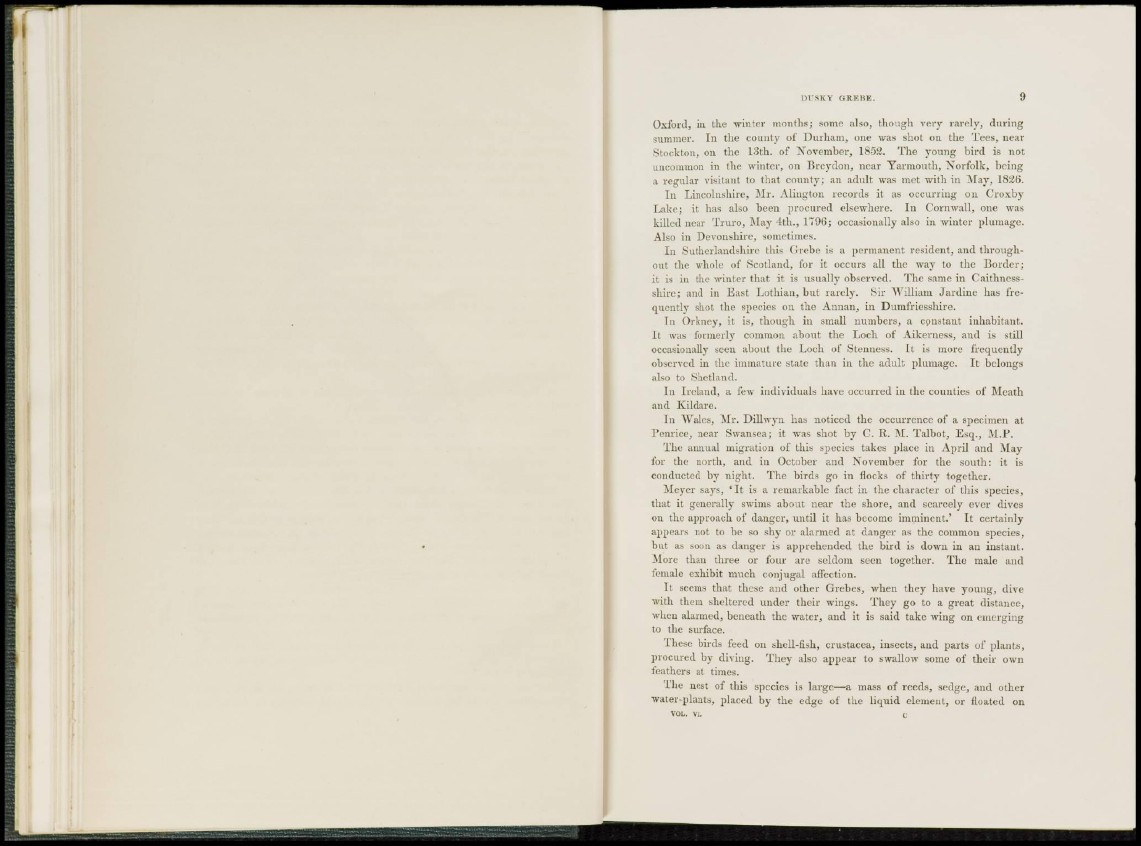
DUSKY GREBE. 9
Oxford, in the -winter months; some also, t h o u g h very r a r e l y , during
summer. In the county of Durham, one was shot on the Tees, near
Stockton, on the 13th. of November, 1852. The young bird is not
uncommon in the winter, on Urcydon, near Yarmouth, Norfolk, being
a regular visitant to that county; an adult was met with in May, 1826.
I n Lincolnshire, Mr. A l i n g t o n records it as occurring on Croxby
L a k e ; it has also been procured elsewhere. In Cornwall, one was
killed near T r u r o , May 4 t h . , 1T96; occasionally also in winter plumage.
Also in Devonshire, sometimes.
I n Sutherlandshire this Grebe is a permanent resident, a n d t h r o u g h out
the whole of Scotland, for it occurs all the way to the Border;
it is in the winter that it is usually observed. The same i n Caithnesss
h i r e ; and in East Lothian, but rarely. Sir W i l l i am J a r d i n e has freq
u e n t l y shot the species on the Annan, in Dumfriesshire.
I n Orkney, it is, t h o u g h in small numbers, a constant inhabitant.
I t was formerly common about the Loch of Aikerness, and is still
occasionally seen about the Loch of Stenness. It is more frequently
observed in the immature state than in the adult plumage. It belongs
also to Shetland.
I n Ireland, a few i n d i v i d u a l s have occurred in the counties of Meath
and Kildare.
I n Wales, Mr. D i l l w y n has noticed the occurrence of a specimen at
P e n r i c e , near Swansea; it was shot by C. R. M. T a l b o t , Esq., M.P.
The annual migration of this species takes place in April and May
for the north, and in October and November for the south: it is
conducted by night. The birds go in flocks of t h i r t y together.
Meyer says, ' I t is a remarkable fact in the character of this species,
t h a t it generally swims about near the shore, and scarcely ever dives
on the approach of danger, u n t i l it has become imminent.' It certainly
appears not to be so shy or alarmed at danger as the common species,
but as soon as danger is a p p r e h e n d e d the b i r d is down in an instant.
More than three or four are seldom seen together. The male and
female exhibit much conjugal affection.
I t seems that these and other Grebes, when they have young, dive
with them sheltered under their wings. They go to a great distance,
when alarmed, b e n e a t h the water, and it is said take wing on emerging
to the surface.
These birds feed on shell-fish, Crustacea, insects, a n d parts of p l a n t s,
p r o c u r e d by diving. They also appear to swallow some of their own
feathers at times.
The nest of this species is large—a mass of r e e d s , sedge, and other
w a t e r - p l a n t s , placed by the edge of the liquid element, or floated on